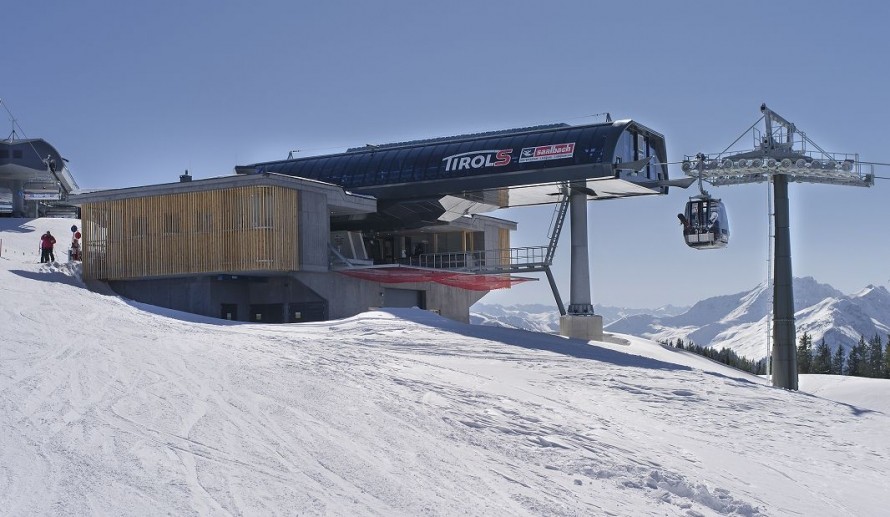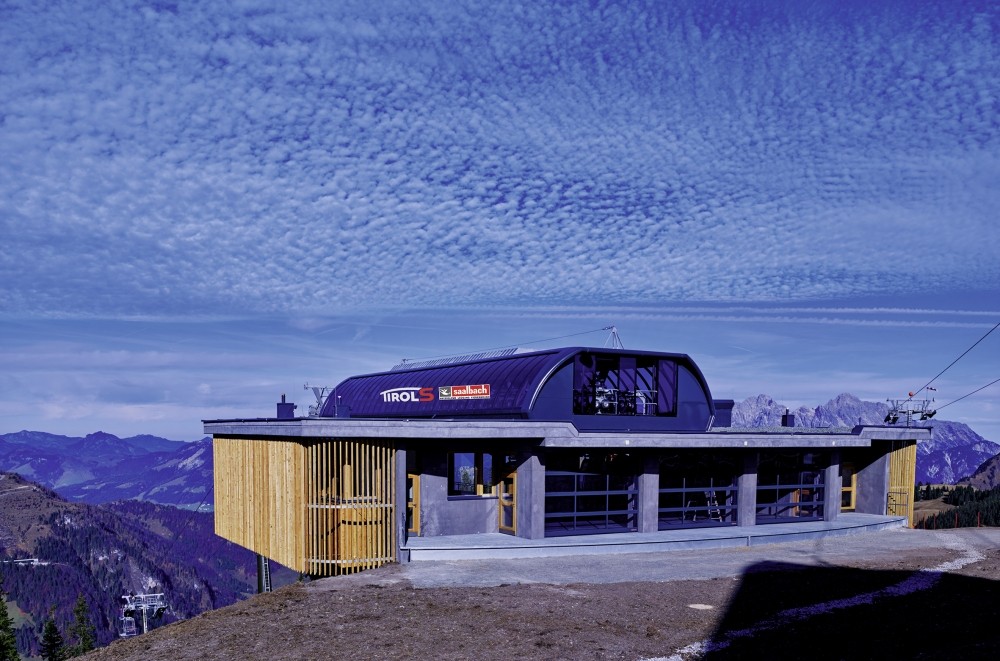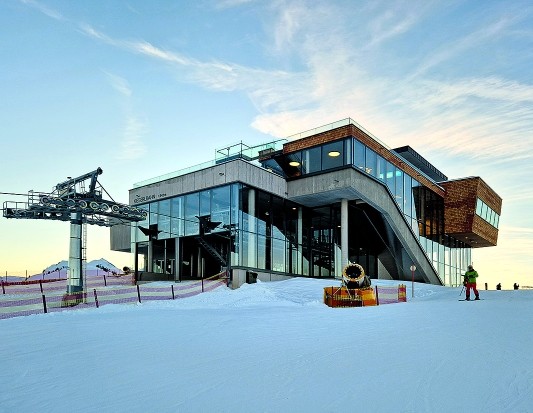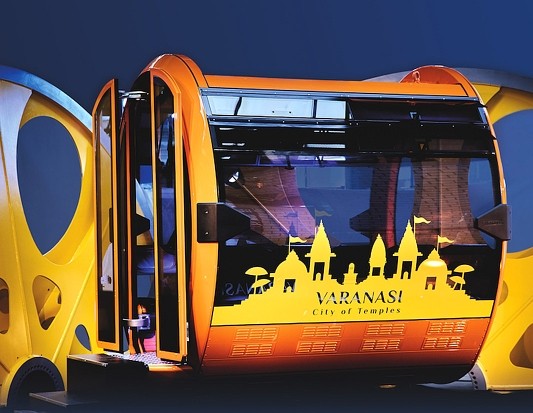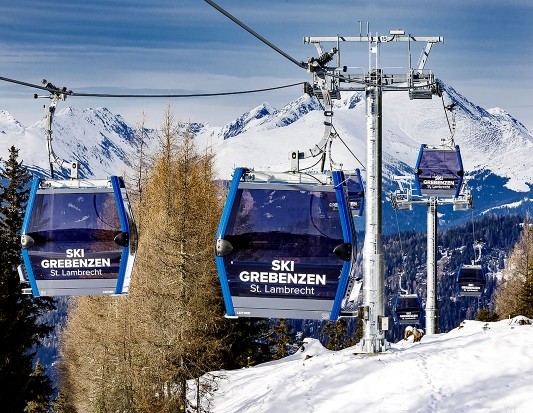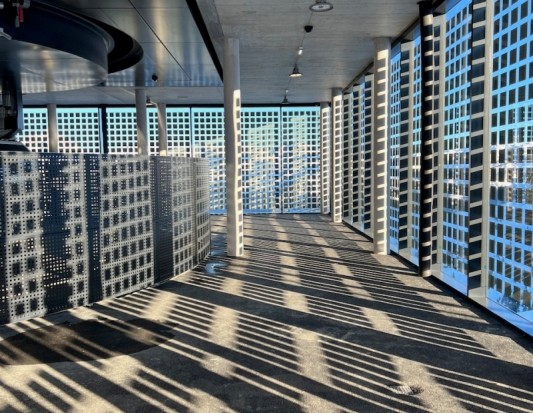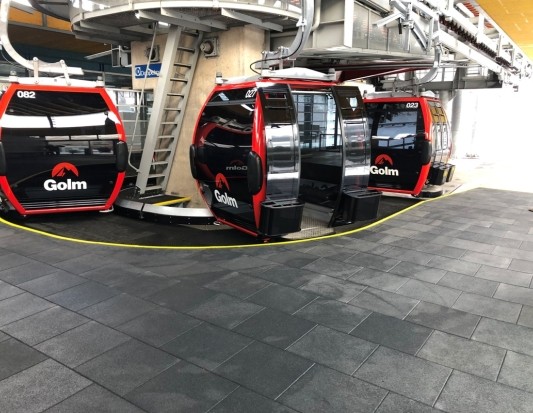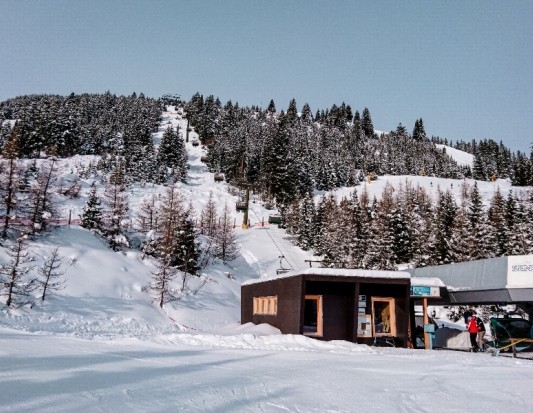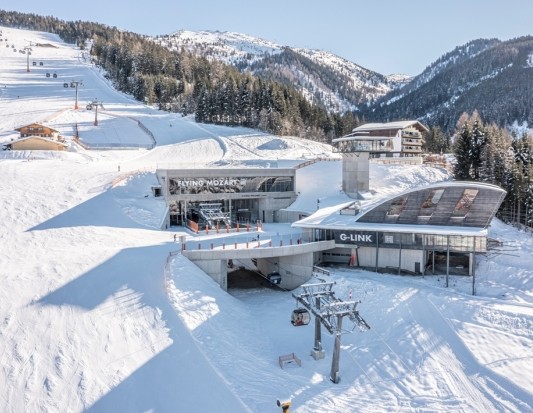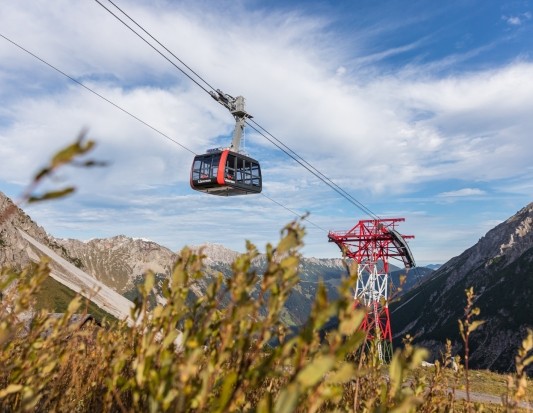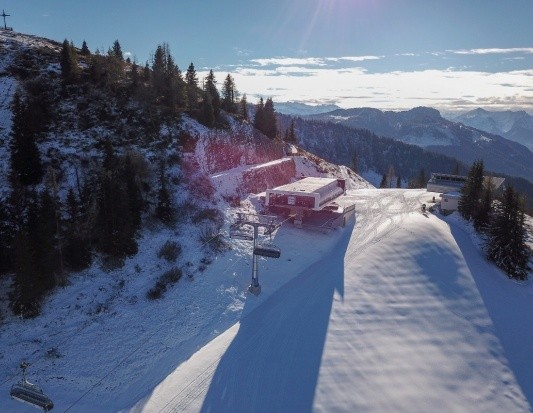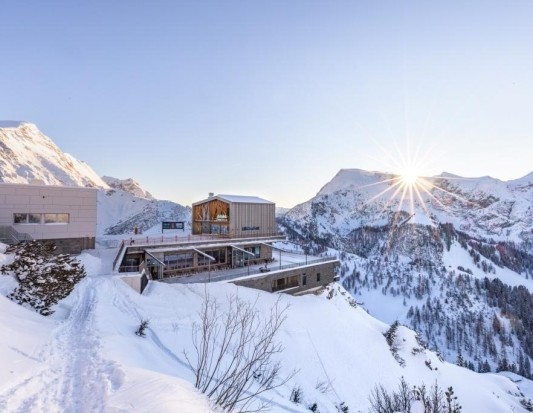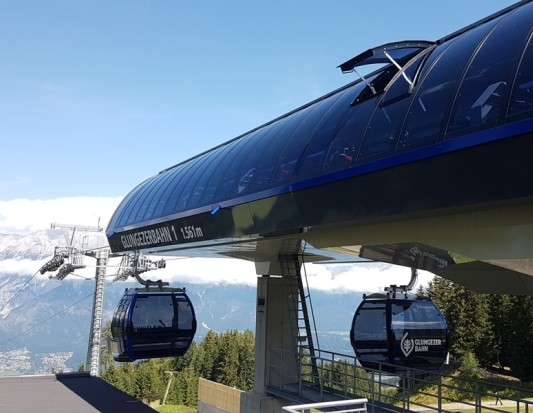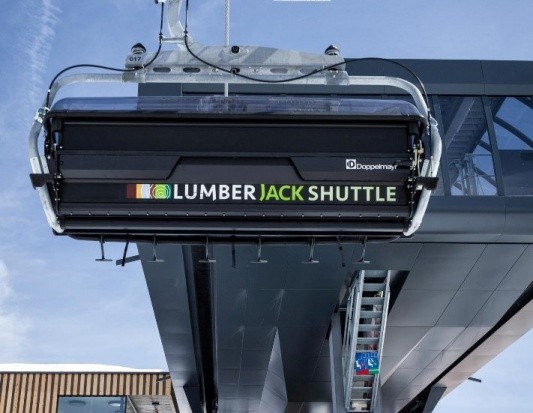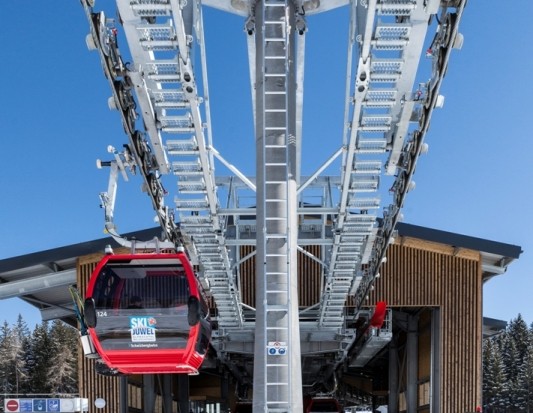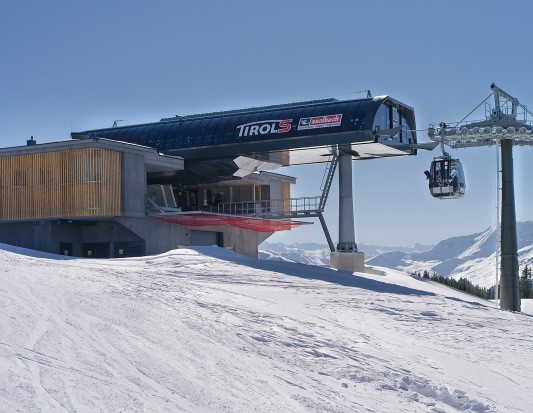10MGD Vierstadlalm
Fieberbrunn
TirolS: Enhancing the Skiing Experience with a Cross-Border Ropeway Connection
The construction of the 10-seater TirolS monocable ropeway marks the fulfillment of a long-held vision for Bergbahnen Fieberbrunn. Plans to connect the ski areas of Fieberbrunn in Tyrol and Saalbach-Hinterglemm/Leogang in Salzburg were conceived over 25 years ago. Following the extensive modernization of the Fieberbrunn ski resort, the ropeway stands as the pinnacle of a comprehensive development concept.
The history of the 10-passenger TirolS monocable ropeway can be summed up with the phrase "good things come to those who wait." Bergbahnen Fieberbrunn in Tyrol has been nurturing the idea of linking with the neighboring Saalbach-Hinterglemm/Leogang ski area in Salzburg for a quarter of a century. "Since the 1990s, we have been involved in this project on behalf of Bergbahnen Fieberbrunn. Initially, my father spearheaded the effort and brought me into the project team while I was still a student. Therefore, the successful realization of this project brings us immense joy and satisfaction," emphasizes Stephan Salzmann, Managing Director of Salzmann Ingenieure.
The Initial Considerations
Over the years, numerous options were explored, ranging from ambitious slope projects to peak-to-peak connections. Ultimately, about a decade ago, the ropeway experts at Salzmann Ingenieure, in collaboration with the operators, formulated a two-phase development concept. The first phase focused on enhancing the quality of the Fieberbrunn ski area in a sustainable manner. This involved the modernization of all main ropeways. Key milestones during this phase included the construction of the 8-passenger ropeway Doischberg in 2001 and the 8-passenger ropeway Reckmoos Süd in 2006. The completion of the 10-passenger ropeway Reckmoos North in 2011 marked the successful conclusion of this phase. The second phase aimed at establishing a ski technology connection between Fieberbrunn and the Saalbach-Hinterglemm/Leogang ski area. "The proximity of the two ski areas and the enticing advantages it offered made the connection an obvious choice. Our task was to find the optimal solution," explains Stephan Salzmann. Salzmann Ingenieure took charge of the entire ropeway engineering planning process, from preliminary studies to tenders and approval planning.
Line Layout Expands Opportunities for Freeriders
The starting point on the Tyrolean side was the valley station of the 8-passenger ropeway Reckmoos Süd. During its construction in 2006, the planners already considered the possibility of a connecting ropeway. For the top station on the Salzburg side, the centrally located Reiterkogel was quickly identified as the ideal choice. Determining the location of the mid-station posed the greatest challenge for a long time, with an emphasis on spanning solutions due to licensing requirements.
"However, with the growing popularity of freeriding, our planning work began to focus on the inclusion of an intermediate station at the valley floor. Only with this station in the Hörndlinger Graben can the entire valley basin be accessed by freeriders," highlights Stephan Salzmann.
Cost-Effective Implementation and Comfortable Result
The TirolS ropeway is designed as a detachable single-cable ropeway with cabins for ten passengers. The ropeway has a capacity of 2,600 passengers per hour. In around nine minutes, the modern EUB with a total length of 2,890 meters overcomes an absolute difference in altitude of 726 meters (center-mountain). Bergbahnen Fieberbrunn invested around 20 million euros in the project, including snowmaking equipment and piste construction. The cabins are spacious and equipped with heated seats and comfort upholstery. On the outside are quivers for skis and snowboards. Entry to the cabins is at the same level, and passengers can comfortably stand upright when entering and exiting the cabins.
The drive is located in the top station, while the haul rope is tensioned in the bottom station. This is mechanically designed with a concrete weight. This means that, despite the considerable length and transport capacity, the rope can be carried out in the mid station. In addition to the station sheave batteries and three sheaves, only the station equipment such as accelerators, decelerators and platform conveyors are located there. "Compared to hydraulic guying, mechanical weight guying allows significant savings, as it is possible to use some standard provisions advantageously. Thanks to this solution, however, the installation turns out to be somewhat lighter; for example, we needed two fewer supports," Stephan Salzmann reports on the technical details.
The architecture of the station buildings was designed by architect Thomas Fliri from Fieberbrunn. The buildings have a functional and modern design. Due to the limited space available, the construction of the mid-station was a particular challenge. Nevertheless, it was possible to accommodate the basement station for garaging the cabins there.
Successful start with promising figures
Although the first season 2015/16 got off to a slow start due to the snow conditions, the operators are very satisfied with the results. Last winter, the TirolS ropeway carried a total of 770,000 skiers. 260,000 guests commuted from the Glemm Valley to the Tyrolean part of the ski area, and around 130,000 winter sports enthusiasts from Fieberbrunn to Salzburg. An 18 percent increase in overnight stays in Fieberbrunn confirms the economic importance of the connecting ropeway for the entire region.
Anlagedaten
- Antrieb
- Mountain
- Anzahl Stützen
- 17
- Bauphase
- 2015
- Fahrgeschwindigkeit
- 6,0 m/s
- Fahrzeit
- 9,30 minutes
- Förderleistung
- 2.600 P/h
- Höhe Talstation
- 1.284 m
- Höhe Bergstation
- 1.808 m
- Höhenunterschied
- 524 m
- Horizontale Länge
- 2.736 m
- Kabinenanzahl
- 89
